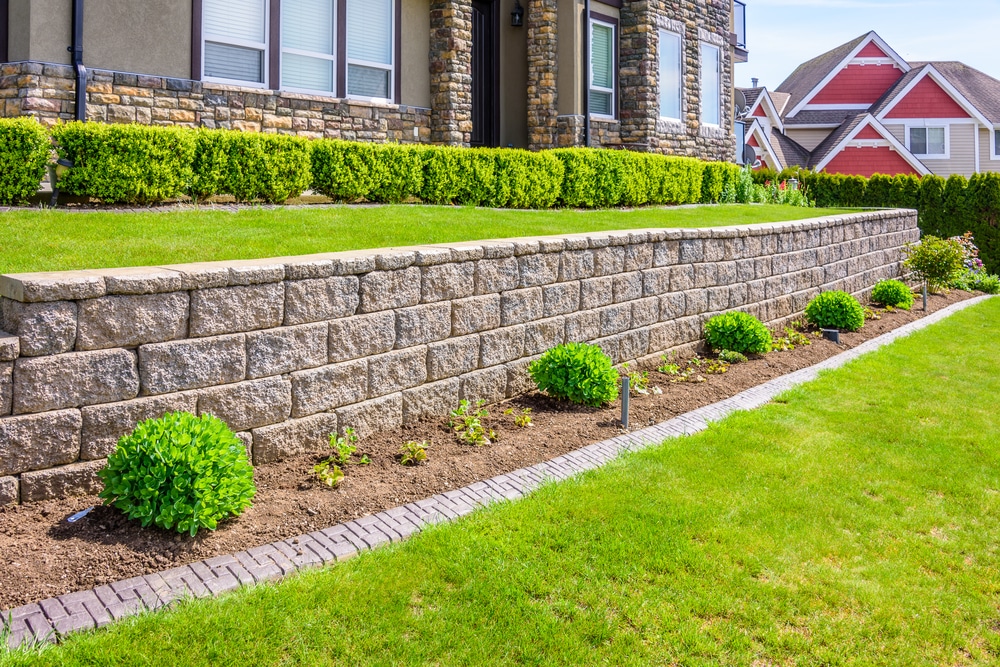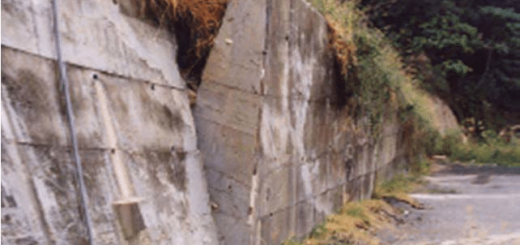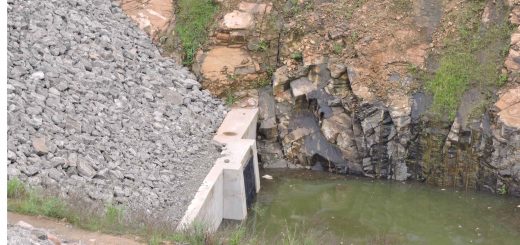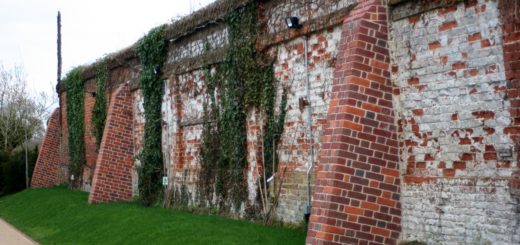Retaining Wall Blocks | Basic Overview
Retaining wall blocks have become a popular choice for homeowners and landscapers seeking to create structurally sound landscapes while adding an appealing touch to their outdoor spaces. These versatile blocks serve a dual purpose, providing erosion control and structural support, all while enhancing the aesthetics of the surrounding environment. Whether you’re considering building a terraced garden, constructing a raised patio, or preventing soil erosion, retaining wall blocks offer a practical and visually pleasing solution.
What are Retaining Wall Blocks?
Retaining wall blocks are specially designed construction units that are used to build walls that retain soil or other materials. These blocks are typically made from durable materials such as concrete, natural stone, or timber. They are available in various shapes, sizes, and colors, allowing homeowners and landscapers to choose options that best complement their specific design preferences and functional needs.
Benefits of Retaining Wall Blocks
Erosion Control
One of the primary benefits of retaining wall blocks is their ability to control erosion. Sloping landscapes are prone to soil erosion, especially during heavy rains or in areas with steep inclines. Retaining walls constructed with these blocks act as barriers, preventing soil from eroding and creating unsightly and potentially dangerous situations. By retaining the soil in place, these walls help maintain the integrity of the landscape.
Structural Support
Retaining wall blocks provide excellent structural support, particularly when dealing with changes in elevation or creating terraced landscapes. They help stabilize slopes and prevent land movement, thereby protecting the integrity of structures and preventing potential damage caused by soil shifting. Whether it’s supporting a raised garden bed or reinforcing a hillside, retaining wall blocks ensure the stability and longevity of the landscape.
Aesthetic Appeal
In addition to their functional benefits, retaining wall blocks also add aesthetic appeal to outdoor spaces
Types of Retaining Wall Blocks
There are several types of retaining wall blocks available in the market, each with its unique characteristics and suitability for different applications. Here are the most common types:
- Concrete Blocks
Concrete blocks are a popular choice for retaining walls due to their durability and versatility. They are manufactured in various sizes and shapes, including interlocking blocks that provide added stability and ease of installation. Concrete blocks can be textured or smooth, offering different design options to match the desired aesthetic. These blocks are known for their strength and ability to withstand heavy loads, making them ideal for large-scale retaining wall projects.
- Natural Stone Blocks
For those seeking a more natural and timeless look, natural stone blocks are an excellent choice. These blocks are typically made from materials like limestone, granite, or sandstone, which offer unique textures, colors, and patterns. Natural stone blocks add a touch of elegance and blend seamlessly with the surrounding environment. They are often used in landscaping projects that prioritize a rustic or organic aesthetic.
- Timber Blocks
Timber blocks provide a warm and rustic appeal to retaining walls. They are typically made from pressure-treated wood, which enhances their durability and resistance to rot and insect damage. Timber blocks are lightweight, making them easy to handle and install. They are commonly used for smaller retaining wall projects or in areas where a natural, wooden appearance is desired.
Factors to Consider When Choosing Retaining Wall Blocks
When selecting retaining wall blocks for your project, it’s essential to consider various factors to ensure the best outcome. Here are some key considerations:
- Height and Load Capacity
The height of your retaining wall and the load it needs to support are crucial factors in determining the type of blocks required. It’s important to choose blocks with adequate load-bearing capacity to ensure the stability and longevity of the wall. Consulting with a professional or referring to manufacturer guidelines can help determine the appropriate blocks for your specific needs.
- Drainage
Proper drainage is essential for retaining walls to prevent water buildup and potential damage. Consider using blocks that have built-in drainage features or incorporating drainage pipes or gravel behind the wall to allow water to flow away efficiently. Adequate drainage ensures the integrity of the wall and helps prevent soil saturation and erosion.
- Climate and Weather Resistance
The climate and weather conditions in your area should influence your choice of retaining wall blocks. Some blocks are better suited for colder climates, while others may be more resistant to heat, humidity, or freeze-thaw cycles. It’s crucial to select blocks that can withstand the specific climate conditions in your region to avoid premature deterioration or damage.
- Cost
Budgetary considerations play a significant role in any construction project. Retaining wall blocks come in a range of prices, depending on the material, size, and design. It’s important to find a balance between your budget and the desired quality and aesthetic appeal. Comparing prices and exploring different options will help you make an informed decision without compromising on the overall quality and functionality of the wall.
Retaining wall blocks offer a versatile and practical solution for erosion control, structural support, and landscape enhancement. With various types of blocks available, you can choose the ones that best suit your project’s requirements and aesthetic preferences. By considering factors such as height, drainage, climate resistance, and cost, you can make informed decisions during the selection and installation process. Proper maintenance and care ensure the longevity and appearance of the retaining wall, while creative design choices and incorporating landscaping elements add a personalized touch to your outdoor space.
FAQs
1. Can I build a retaining wall on my own?
Yes, it is possible to build a retaining wall on your own, particularly for smaller projects. However, it’s crucial to have a good understanding of the construction process, including proper excavation, leveling, and block placement. Larger or more complex projects may require professional assistance.
2. How long do retaining wall blocks last?
The lifespan of retaining wall blocks depends on various factors, including the quality of the blocks, the installation process, and maintenance practices. With proper installation and regular upkeep, retaining wall blocks can last for several decades.
3. Are retaining wall blocks environmentally friendly?
Retaining wall blocks made from concrete or natural stone can be considered environmentally friendly due to their durability and longevity. They require minimal maintenance and do not contribute to waste or pollution. Timber blocks, on the other hand, should be sourced from sustainably managed forests to ensure their environmental impact is minimized.
4. Can retaining wall blocks be used for curved walls?
Yes, some retaining wall blocks are specifically designed to create curved or radius walls. These blocks have a unique shape that allows for flexibility in design. It’s important to choose blocks that are suitable for curved walls and follow the manufacturer’s instructions for installation.
5. Do retaining wall blocks require a building permit?
The need for a building permit for your retaining wall project depends on local regulations and the specific height and location of the wall. It’s recommended to check with your local building department or consult a professional to determine if a permit is required for your project.




